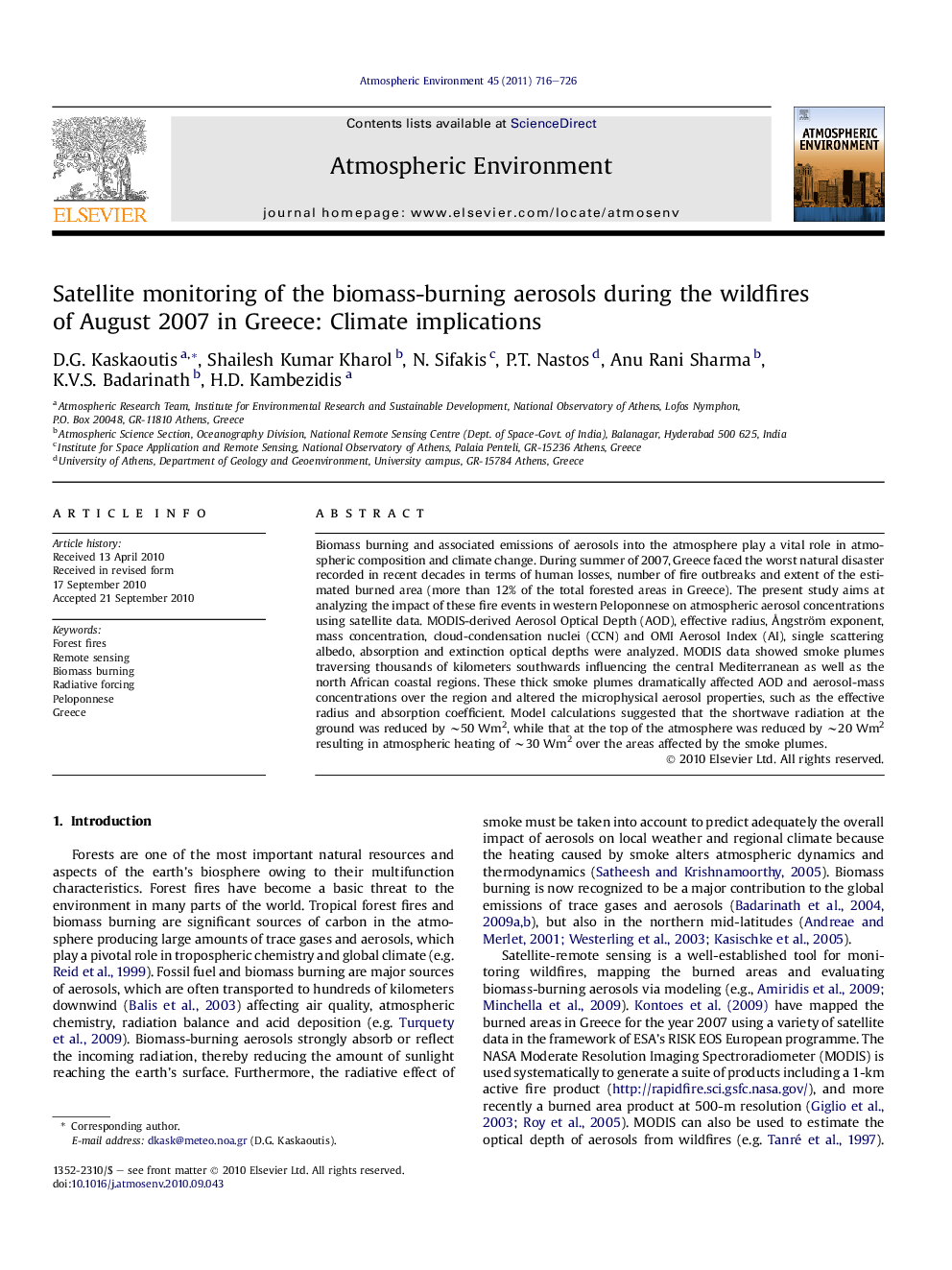| Article ID | Journal | Published Year | Pages | File Type |
|---|---|---|---|---|
| 4440216 | Atmospheric Environment | 2011 | 11 Pages |
Biomass burning and associated emissions of aerosols into the atmosphere play a vital role in atmospheric composition and climate change. During summer of 2007, Greece faced the worst natural disaster recorded in recent decades in terms of human losses, number of fire outbreaks and extent of the estimated burned area (more than 12% of the total forested areas in Greece). The present study aims at analyzing the impact of these fire events in western Peloponnese on atmospheric aerosol concentrations using satellite data. MODIS-derived Aerosol Optical Depth (AOD), effective radius, Ångström exponent, mass concentration, cloud-condensation nuclei (CCN) and OMI Aerosol Index (AI), single scattering albedo, absorption and extinction optical depths were analyzed. MODIS data showed smoke plumes traversing thousands of kilometers southwards influencing the central Mediterranean as well as the north African coastal regions. These thick smoke plumes dramatically affected AOD and aerosol-mass concentrations over the region and altered the microphysical aerosol properties, such as the effective radius and absorption coefficient. Model calculations suggested that the shortwave radiation at the ground was reduced by ∼50 Wm2, while that at the top of the atmosphere was reduced by ∼20 Wm2 resulting in atmospheric heating of ∼30 Wm2 over the areas affected by the smoke plumes.
